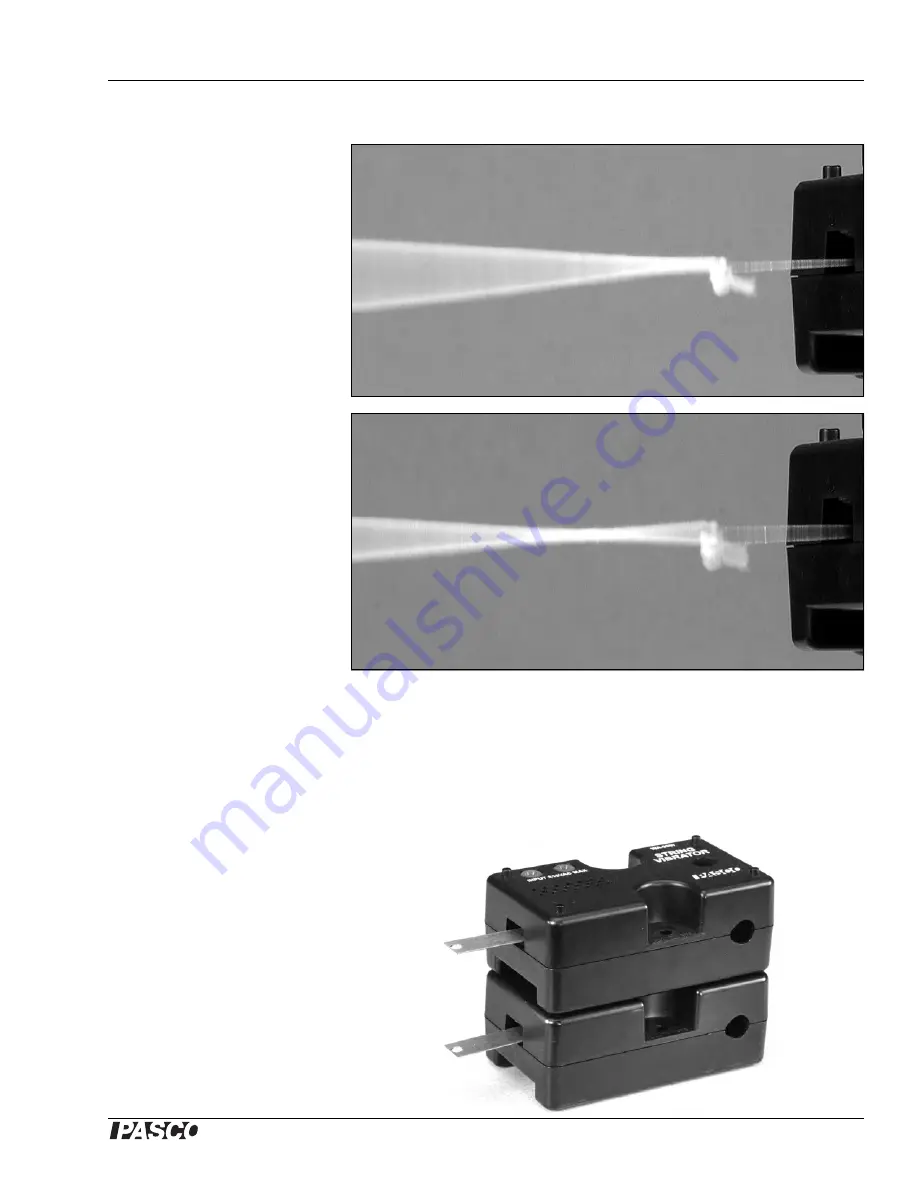
Model No. WA-9857
Equipment Setup
7
®
Good Nodes Versus Bad Nodes
Most demonstrations and
experiments involve
adjusting the length, tension
or frequency to produce a
standing wave pattern. It is
tempting to look only at the
amplitude of the wave and
concentrate on making it as
large as possible; but it is
also important to check that
the nodes are “clean” and
well defined, especially the
node at the vibrating blade.
Check the end of the
vibrating blade. There
should be a node at the point
where the cord attaches, as
shown in the first picture to
the right.
An example of a bad node is
shown in the second picture.
The blade rattling against
the plastic case indicates a
bad node.
The method for correcting a bad node depends on the type of experimental setup. With the elastic
cord, the adjustment is usually made to the length and tension simultaneously by moving one of
the end points. With an inelastic string set up with a pulley and a hanging mass, you can adjust the
length of the string by moving String Vibrator, or adjust the tension by changing the hanging
mass. With either type of string, if you are using a variable-frequency signal generator you can
adjust the driving frequency.
Storage
Pins on the top corners and matching
holes on the bottom corners of the String
Vibrator allow you to stack two or more
units for storage.
Bad Node
Good Node
Summary of Contents for WA-9857
Page 26: ......








































